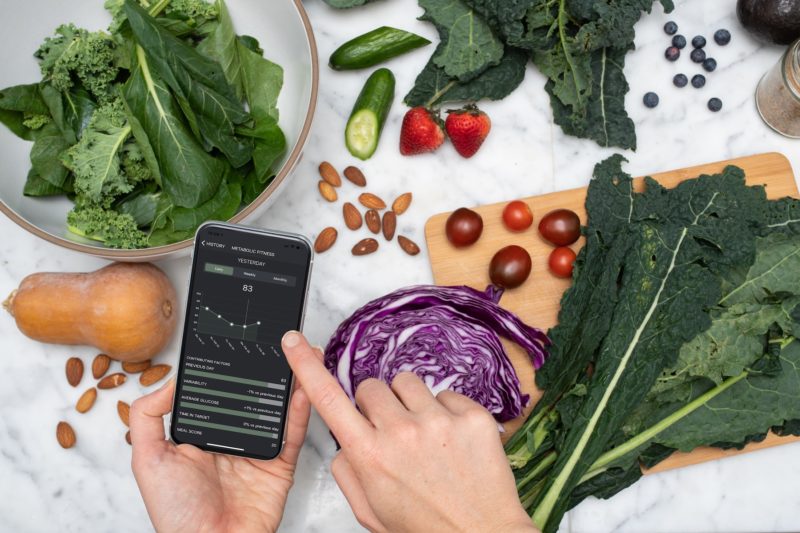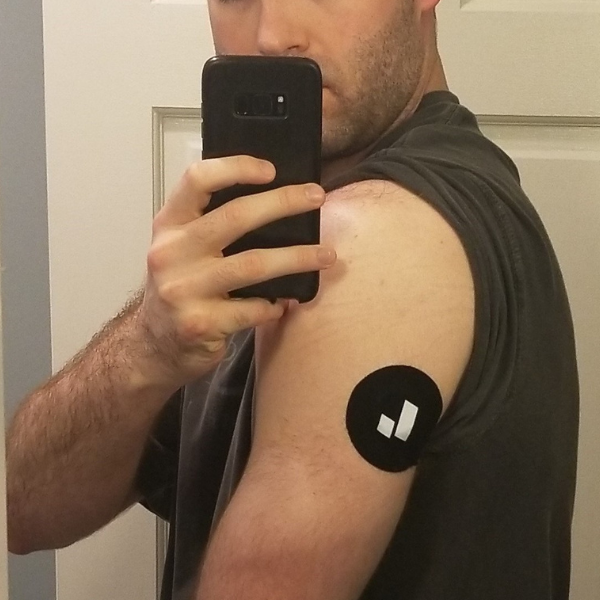As a Type 1 diabetic, I have long been passionate about diabetes education and advocacy. My work in the diabetes community has ranged from starting a College Diabetes Network chapter at my university to interning at the T1D Exchange to spending three months biking across the country with Beyond Type 1 to show that anything is possible despite your diagnosis and raise money for a cure. Most recently, I’ve been working on building an app to help kids learn to manage their diabetes through games while working as a diabetes coach and getting a master’s degree in public health.

Jesse Lavine, Operations Specialist at Levels and Type 1 Diabetic Educator
To some, working for Levels, a health-tech startup aiming to improve metabolic health in the broader population, might seem like a sharp turn off course. If I care so much about supporting the diabetes community, why would I work on a product that is not intended for diabetes management, cure, or prevention? If my goal is to help Type 1 diabetics live happier, healthier lives, why would I work for a company that is using diabetes technology to help non-diabetics optimize their health?
But for me, taking a job at Levels was an easy yes. My goal in life is to have the biggest impact possible on the well-being of people with Type 1 diabetes, and I think working with Levels is the best path to doing that because of the ripple effects this company will have on metabolic health.
Here are just a few of the things I’m excited to see Levels do that I believe will make life better for people like me in the long run.
Making Valuable Technology More Accessible
I want to start with a very brief lesson on what it’s like to manage diabetes, for the fortunately uninitiated. Every day, we have to keep tabs on our blood glucose levels to understand how different foods and lifestyle choices affect us, know when we need to take some insulin to bring our blood sugar down or eat something to get them up, and generally do what we can to keep our blood sugar in a healthy range.
There are two ways to do this: a fingerstick meter that involves taking readings throughout the day using a drop of blood, or a newer technology called a continuous glucose monitor (CGM), which continuously measures blood glucose levels through a sensor implanted on the upper arm. I got my first CGM when I went to college, and it completely changed my life, helping me to experiment with different diets and get immediate feedback on what worked best for my health. I now have an insulin pump and a CGM and, if I had to give one up, it would be the insulin pump in a heartbeat because of the incredible insights the CGM gives me on how to make better choices for my needs. I know from experience that this technology can help people with Type 1 diabetes live a normal life—and I suspect it could be instrumental in helping people with Type 2 reverse their diagnosis.
So, we should get a CGM in the arm of every diabetic in the country, right? The problem is, these devices are more expensive than standard monitors, and therefore less accessible to many diabetics who can already barely keep up with insulin costs. That’s why there are mixed feelings in diabetic communities about companies like Levels, which provide CGMs to non-diabetics at a premium, out-of-pocket price to help them better understand their metabolic health. A common viewpoint is, “If I can’t get this technology I need, why should wealthy—and relatively healthy—people have access? If people with Type 1 can’t afford this yet, then nobody else should until we solve that problem.”
The thing is, it’s precisely by driving up demand for CGMs in the general population that we’re going to bring down the cost for those who need it. The lack of accessibility of CGMs for diabetics is not a supply issue—it’s an insurance and cost issue. (If it was a supply issue, Levels would not be taking them from those who need it.) When more people who don’t need CGMs are opting to use them anyways, it will drive up demand, which will drive up competition, which will drive down cost and hopefully pressure insurance companies to change policies and expand coverage. This is the Levels not-so-secret “secret master plan,” and it’s one I can seriously get behind because I know that the 0.5% of Americans who have Type 1 diabetes can’t solve this problem alone—we need the demand of the general population behind us, too.
Building a Dataset for Understanding the Impact of Food on Health
Levels is going beyond simply providing CGMs to build a product that can help people better understand the data coming out of them.
The current CGM technology doesn’t do a very good job of helping diabetics tie behavior to blood sugar changes. You may eat a cheese lasagne and see your blood sugar spike, but it’s not very clear what actually caused the spike: Was it the pasta? The tomato sauce? The wine that you drank alongside it? You have to be your own lab experiment to suss it out for yourself, which is interesting but also takes time and dedication. When I first got my CGM, I spent years trying out different diets to figure out what worked best for me—not everyone is going to have the patience to do that for themselves, especially when it’s so much easier to just fall into old habits and eat what you like, just upping insulin intake to cover extra carbs.
That’s why I’m so excited about how Levels is thinking about the real-life information we’re getting from users, and how to turn that into a valuable database of information about how different foods generally affect blood sugar. For instance, we’re working on a meal debugger that can point out specific foods in a meal you ate that may have caused a blood sugar spike. We’re also adding the ability for people to share their glucose responses with all members or a smaller trusted group, or to follow other people, such as Levels founders. Our hope is that this helps people understand the full spectrum of glycemic responses.
I can imagine how data like this would have helped me more quickly identify the foods that were good for me—and ones I needed to avoid—shortening the amount of time I needed to spend testing things on myself. But even if it never amounts to that (given that I’m not sure if Levels will ever be marketed as a tool for diabetics), it will be enough, and here’s why:
For one, it will help reveal just how broken our food systems are. Most of the foods in the middle of the grocery store aren’t good for anyone’s metabolic health, and when the average consumer starts understanding that, they’ll start to demand better—in turn, giving diabetics more options for healthy eating. Think of how gluten-free is now a huge category of foods, giving so many more choices to people with Celiac or gluten sensitivity. Imagine if we could achieve the same for no-added-sugar foods?
But it will hopefully also help prevent diabetics from feeling like the odd ones out. It’s a lot easier to avoid eating pizza when your non-diabetic friends are also saying no to it because they’ve realized it has a negative impact on their health, too.
Learn more:
Creating a New Normal of Caring About Metabolic Health
This is where I see the biggest potential impact of what Levels is doing: Creating a new normal where everybody cares about metabolic health—not just diabetics. I can’t tell you how frustrating it is to talk about metabolic health to friends and family and have them brush me off like this is just a me problem. In reality, this is an everyone problem: 88% of American adults have some sort of metabolic dysfunction, and the vast majority of diabetic cases are preventable Type 2. It’s a huge crisis in the United States, but it doesn’t have to be if more people could get on board with the importance of metabolic health.
Levels is doing the work to get more people access to the tools and knowledge to help prevent these health conditions from happening in themselves, which will trickle down to them telling their friends and families about them, which will lead to a larger understanding. It’s been so empowering to have content from Levels I can send to my loved ones to really break through and help them lead healthier lives.
In turn, I think this will lead to demands for better healthcare for anyone with metabolic dysfunction. I see a world where talking to your doctor about reversing a Type 2 diabetes diagnosis is the norm, rather than feeling like it’s something you have to deal with for the rest of your life; where preventative medicine to avoid a diagnosis in the first place is a bigger deal. As preventative diabetes cases are brought down, I hope that will open up more resources for finding better treatments—or even a cure—for those with Type 1.
So I’m okay not having a very direct impact on Type 1 diabetes at the moment. I’m almost putting it on snooze, knowing that I’ll be able to get back to it after my time at Levels with more tools than ever for helping Type 1 diabetics thrive despite their diagnosis.








